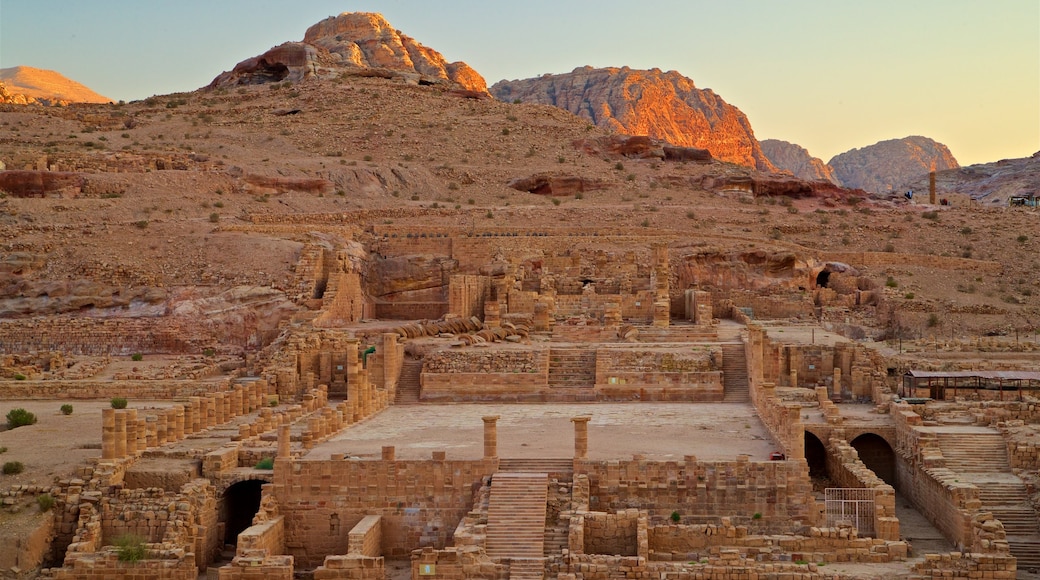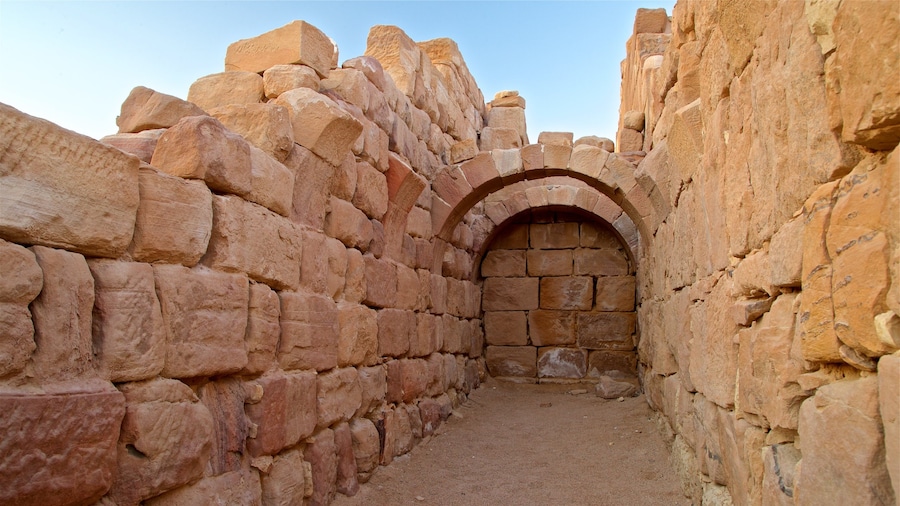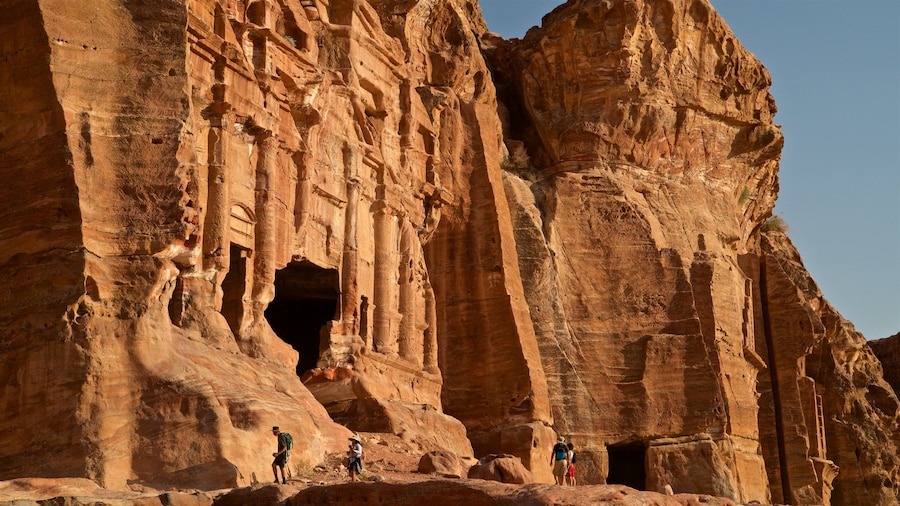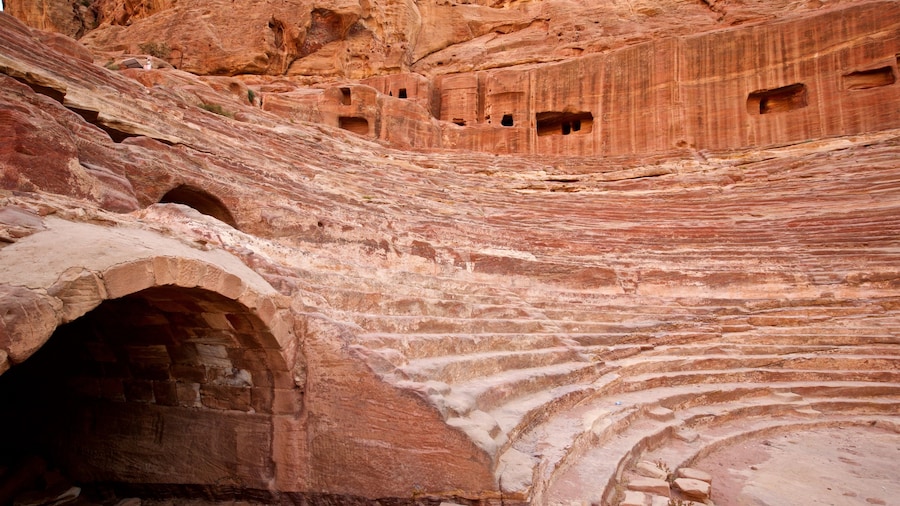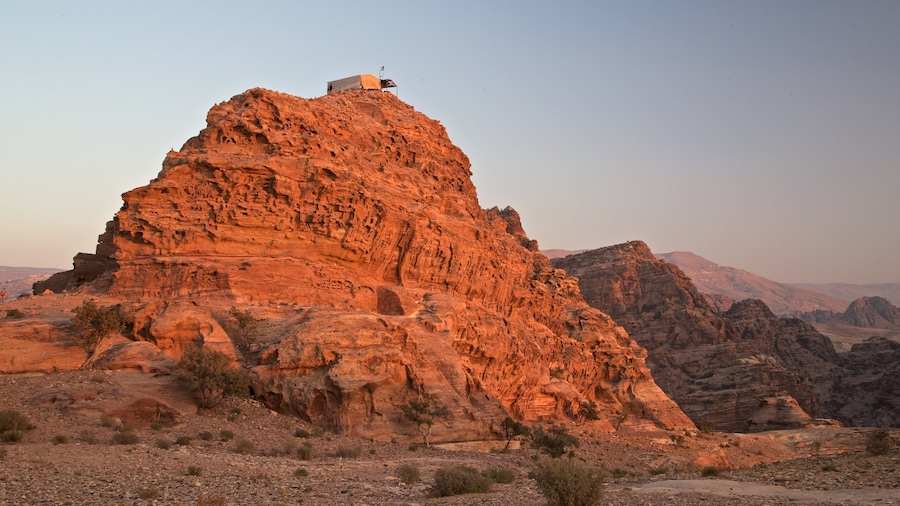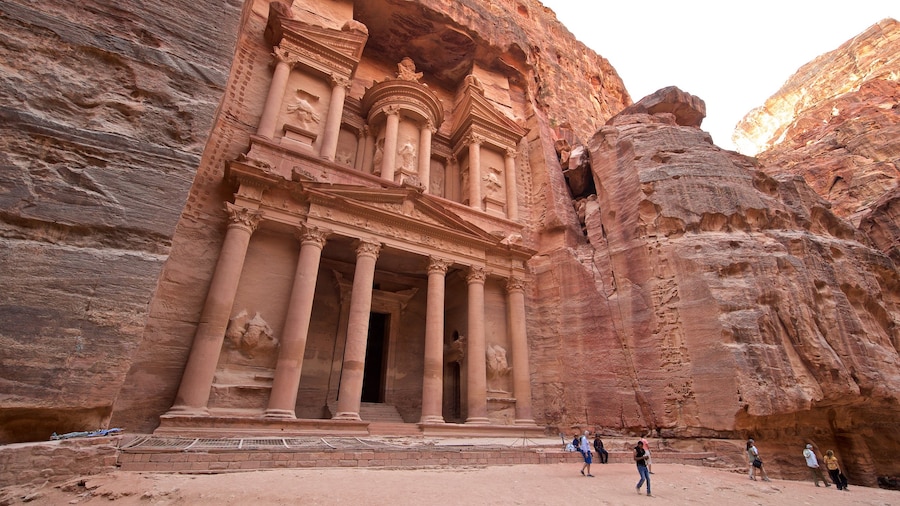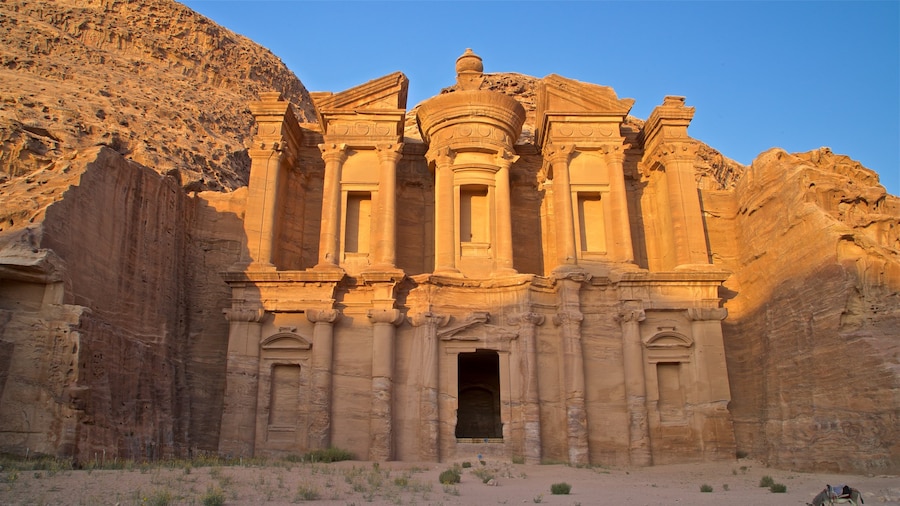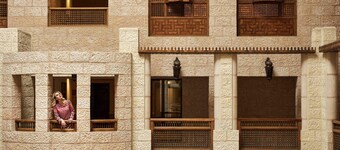The colossal Great Temple is the biggest freestanding and unearthed structure in the UNESCO-protected ancient city of Petra. This split-level complex rises above the city’s Colonnaded Street and covers an area of 81,375 square feet (7,560 square meters). Climb grand staircases, walk in the shadow of huge columns and admire rock carvings at the Great Temple.
Construction of the complex began toward the end of the 1st century B.C. and continued into the following century. Hand-carved from red sandstone cliffs by the Nabataeans, it was an important part of the city up until the Byzantine era. Popular belief is that this was a temple dedicated to Dushara, the Nabataean lord of the mountains. There’s also evidence to imply that it was a palace and event venue.
A ceremonial stepped gateway, called the Propylaeum, leads up to the Lower Temenos courtyard. Tiles scattered on the floor at the side of the gateway suggest that is was once covered. Hexagonal tiles pave the courtyard and on either side is a colonnade split into three tiers. An estimated 96 to 120 columns, each consisting of multiple circular discs, were present here at the time of the temple’s completion.
A smaller staircase connects to the main temple area, known as the Upper Temenos, where fallen columns lie strewn out like dominoes. Look inside residential chambers and see a heart-shaped pillar, Corinthian-style capitals and stucco decorations. In the center of this section is a semicircular theater with seating for around 600 spectators. On the western side is a Roman-Byzantine bath complex.
The temple and other attractions of Petra sit to the west of the town of Wadi Musa. It’s about a 50-minute walk from the Petra Visitor Center. Free parking is available behind the visitor center.
Petra and the Great Temple are open daily and there’s an admission fee. If you are visiting Jordan for more than one day then consider purchasing the Jordan Pass for access to Petra and over 40 other nationwide attractions.
